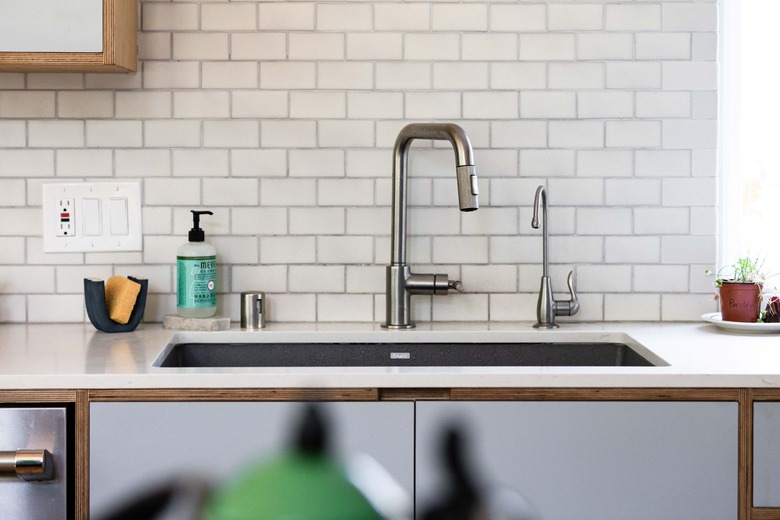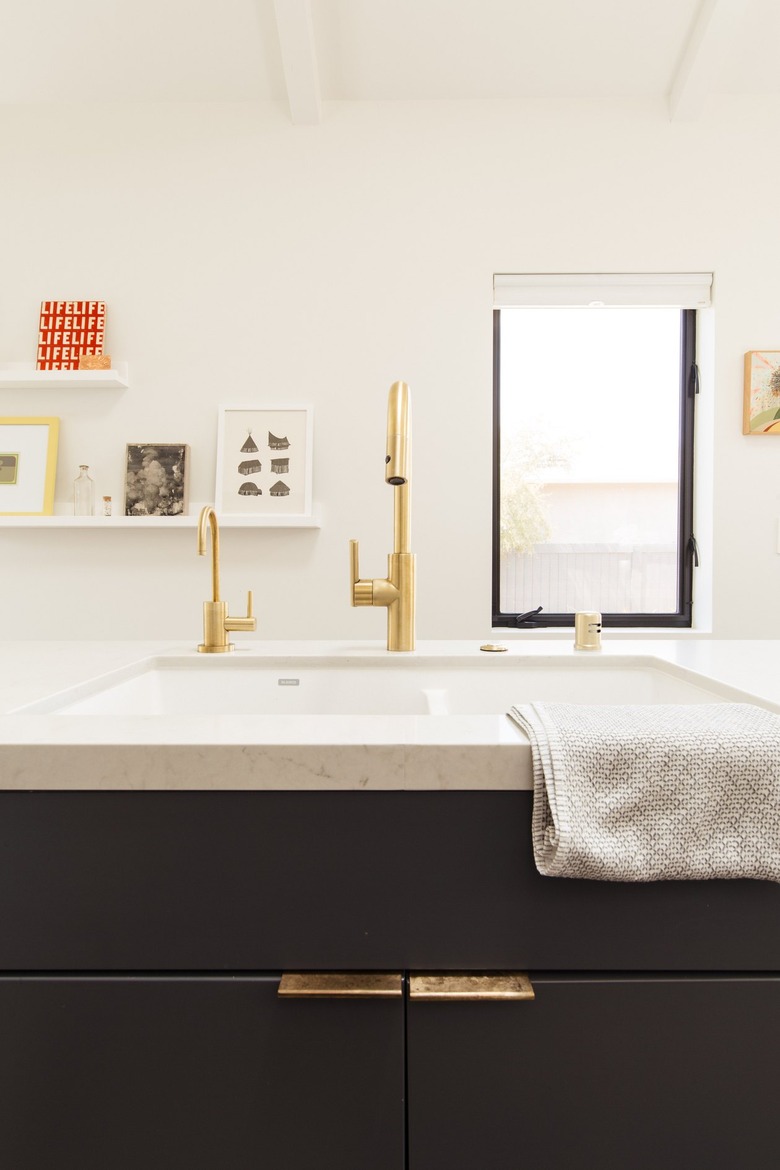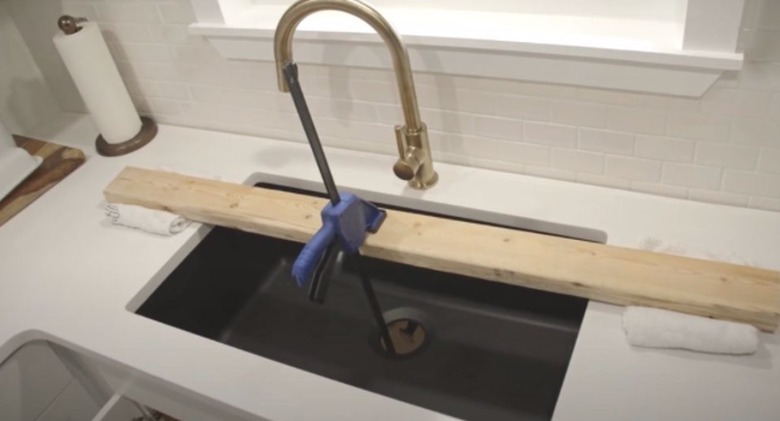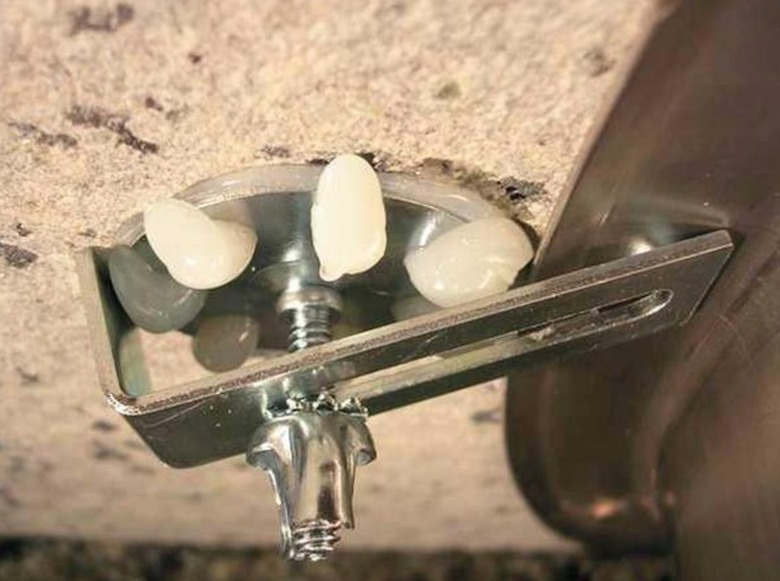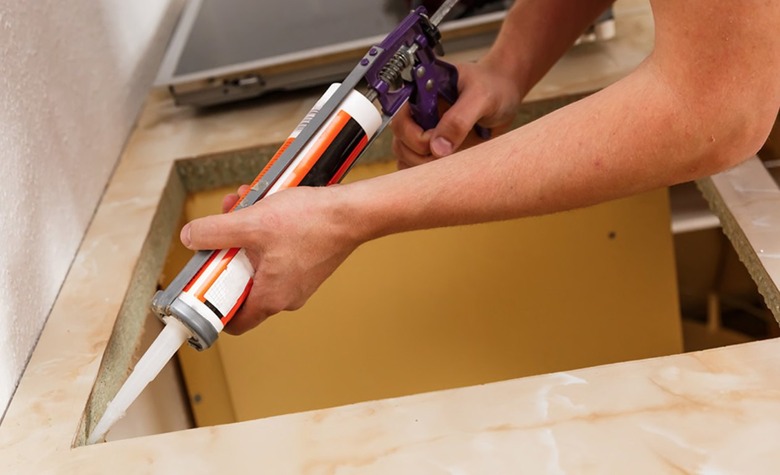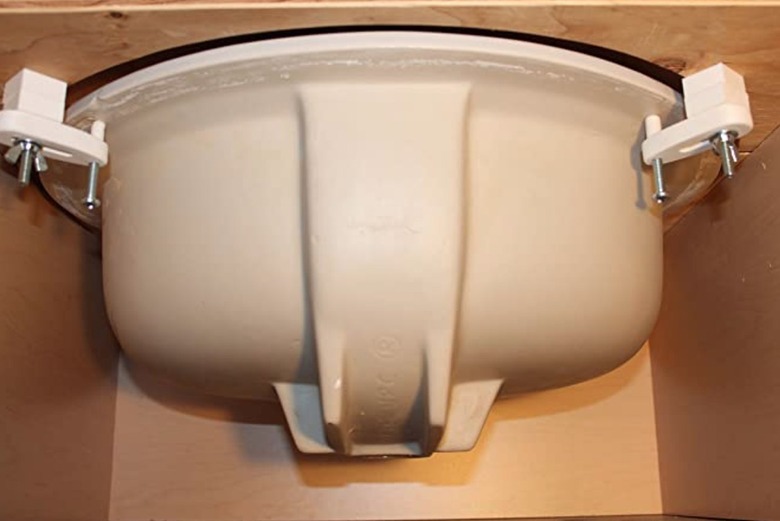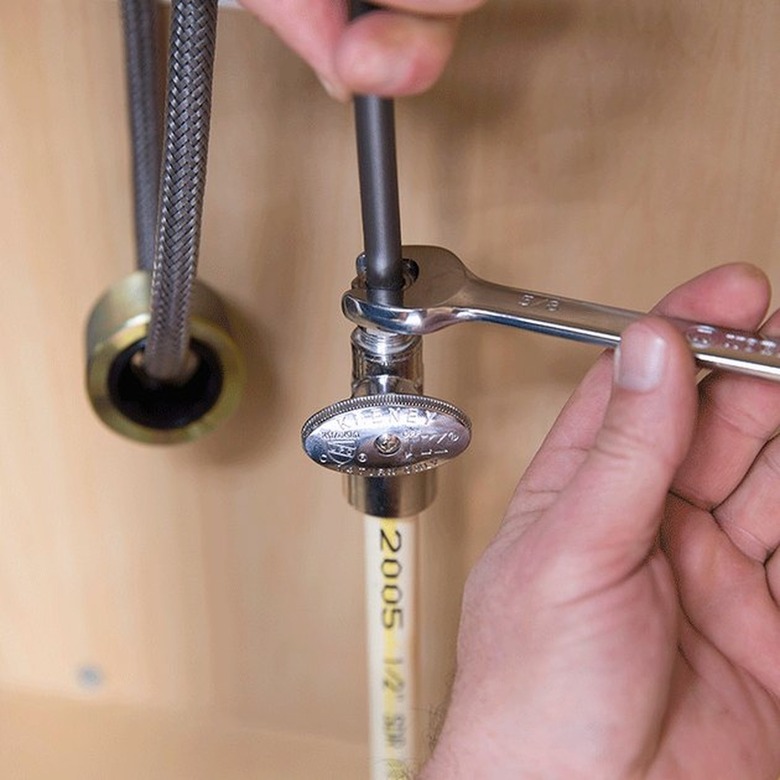How To Install Undermount Sinks In 7 Easy Steps
- What to consider before you get started
- Attaching an undermount sink
- Choosing sink clips and supports
- Installation steps
- Step 1: clean up and get ready
- Step 2: clean the underside of the countertop
- Step 3: Clamp the sink in place
- Step 4: Install the posts for the sink clips
- Step 5: Caulk the sink rim
- Step 6: Install brackets to hold the sink
- Step 7: Install the plumbing
- How much does it cost to install an undermount sink?
For a professional, installing an undermount sink can take about 30 minutes or less if the counter is prepped. But for the rest of us, undertaking this home improvement project may take a bit longer. Because this type of basin has no rim, it must be mounted underneath the countertop, and all of the support comes from clips or rails installed in the cabinet. Given that undermount kitchen sinks are often used with concrete or stone countertops, attaching these clips and rails properly can be challenging.
Pros use a simple trick to make this job easier, which we'll explain in a bit. But even if you follow their lead, there may be another potential problem with this DIY project: the difficulty of cutting an opening in the countertop. The edges of the sink will be visible, so they have to be cut cleaner, with more accuracy, and then polished. That's a tall order, so even if you're confident in your abilities as a plumber and sink installer, you're better off getting a pro to cut the sink opening and faucet holes. Once that's done, our guide can help you figure out the rest.
What to Consider Before You Get Started
If you've ever installed a drop-in basin in the kitchen, you likely know what's involved in hooking up the drain and faucet, and the procedure isn't much different for an undermount sink installation. However, mounting the sink itself can be complicated based on the weight of the vessel.
Lightweight sinks made of copper or stainless steel are fairly easy to handle, and manufacturers usually include most of the supplies you need as well as the instructions. Heavy basins made of cast iron, composite granite, or fireclay are another matter and often require an additional support structure inside the cabinet. There's no need to be daunted by this requirement, though, because you can purchase adjustable support rails. You may, however, need a helper.
Here are the supplies that will help get the job done.
Things Needed
-
Acetone or alcohol
-
Sink clips
-
Sink posts and brackets
-
Two-part epoxy cement
-
Silicone caulk
-
Wingnuts
-
Headlamp
-
Damp rag
-
Bar clamps
-
Pencil
-
Faucet
-
Sink-drain assembly
-
Garbage disposal (optional)
-
P-trap assembly
-
An extra set of hands
Attaching an Undermount Sink
It's difficult to support an undermount sink — even a lightweight one — while you draw its outline on the underside of the cabinet and set the clips. You aren't likely to find anything to place underneath that's exactly the right height, and even if you do, wedging the tight-fitting support below the sink may be difficult. Here's an easy workaround: Place a 2x4 board across the sink opening, and lay it parallel to the countertop. Get a helper to hold the sink in roughly the right position, pass a bar clamp through the drain hole, rest it on the wood, and tighten it to draw the sink against the countertop. Before you tighten it all the way, adjust the position of the basin until it's exactly where you want.
Choosing Sink Clips and Supports
When you purchase a new sink, the sink clips come with it, but if you're installing a recycled sink or if you lost the clips, you'll have to buy some. The most common clips consist of threaded posts mounted to flat disks with holes and metal brackets that fit over the posts and get secured with wingnuts. You can also use cabinet brackets that you screw to the sides of the cabinet and wedge in place under the sink rim to push it tightly against the underside of the cabinet.
If you're installing a particularly heavy basin, such as a double-bowl cast iron option, you can also use a sink rail. This is a rectangular metal railing that you screw to the front, back, and sides of the cabinet. Two adjustable metal rods pass between the sides of the rail underneath the sink, and they have adjustable feet that you tighten to level the sink and push it against the countertop.
Installation Steps
Here's a step-by-step guide on installing your sink from start to finish. After ensuring you have all the supplies needed for the job, take a look through our guide below to make your plan of attack.
Step 1: Clean up and get ready.
Remove everything from the sink cabinet, and take out all the shelves. You'll need all the available working room possible. Get a headlamp so you can see what you're doing without having to hold a flashlight.
Step 2: Clean the underside of the countertop.
Wipe dust and oils from the underside of the countertop using a damp rag or cloth soaked with acetone or alcohol. Dust and oil can interfere with epoxy and silicone caulk adhesion, so it's important to remove all of it. While you're at it, clean the whole sink area, so no debris winds up in the nooks and crannies.
Step 3: Clamp the sink in place.
Get a helper to position the sink roughly under the cutout, and secure it with a bar clamp. Be sure to readjust right before fully tightening the clamp. If the sink has two drain holes, use two clamps.
Step 4: Install the posts for the sink clips.
Draw an outline around the sink rim, and mark the position of each clip with a pencil. Space the clips according to the sink manufacturer's instructions. If you don't have instructions, space the clips no more than 10 inches apart for a lightweight sink and no more than 6 inches apart for a heavy one. Remember that too many clips is better than too few.
Mix enough epoxy resin (we recommend trying either PC-7 or JB Weld) for all of the posts. Apply a generous amount, set the post, and wait overnight for the glue to set.
Step 5: Caulk the sink rim.
Loosen the bar clamps, and lower the sink to the bottom of the cabinet or — if it isn't too difficult — take it out of the cabinet altogether. It may also be easier to install the faucet at this time.
Apply a bead of caulk around the rim, being careful to keep the adhesive on the outer edge. Reposition the sink underneath the cutout, adjust it so the rim is inside the outline you drew, tighten the clamps, and clean up any caulk that oozes out.
Step 6: Install brackets to hold the sink.
Slip a bracket over each of the posts, position the sink to overlap the rim, screw on a wingnut, and tighten it all the way. It's fine to do this by hand, but you can use locking pliers if you prefer. It's best to allow the silicone caulk to set overnight before removing the clamps.
Step 7: Install the plumbing.
Install the faucet if you haven't already done so. Connect it to the water supply valves. Screw a sink-drain assembly to the drain hole, or install a garbage disposal if you have one. Finally, connect the drain to the P-trap assembly and the wall drain.
How much does it cost to install an undermount sink?
As with many jobs that involve plumbing, you can save money by installing the sink yourself. According to HomeAdvisor, professional udermount installation can cost as much as $2,000. And this is not including the price of your new sink or any supplies. Moreover, plumbers charge by the hour, and if you need stone or granite countertops cut, expect the price to nearly double. Alternatively, if you do the installation yourself, you could spend less than $400 total.



